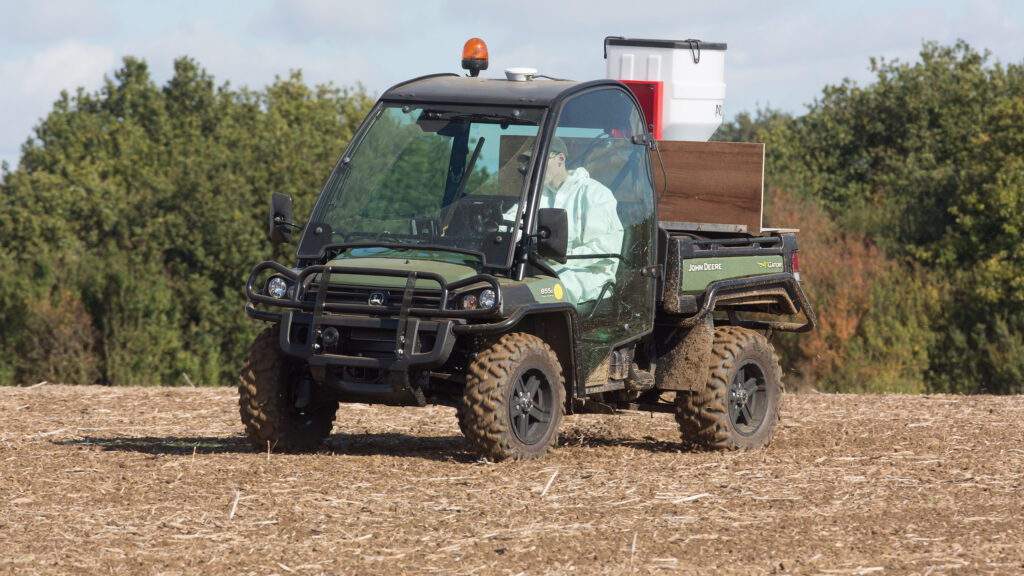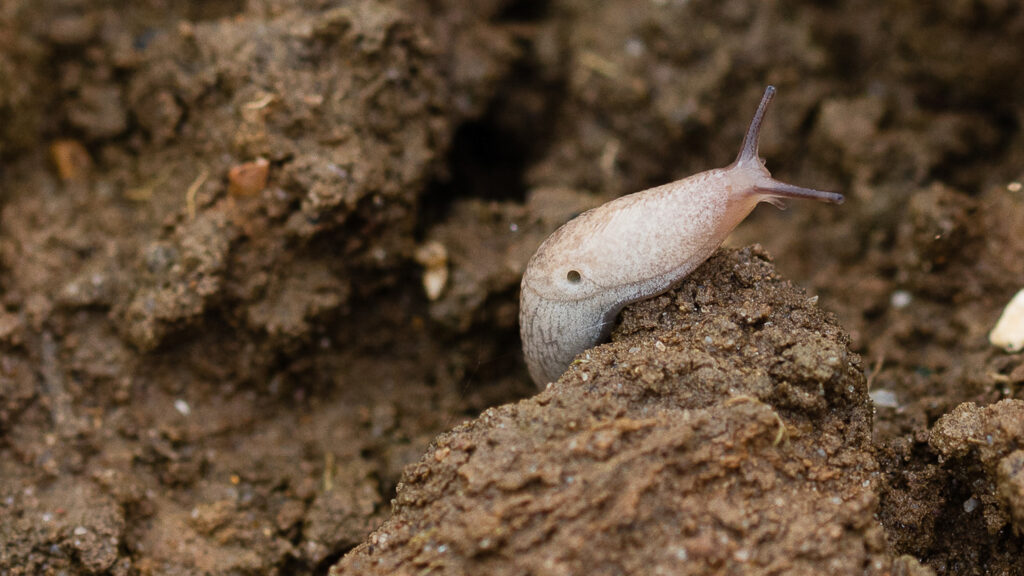Wetter weather could see slug rise in newly drilled wheat
 Slug pellet application © Certis Belchim
Slug pellet application © Certis Belchim With more unsettled weather forecast across the UK following recent rain, slug activity is expected to rise, posing a threat to newly planted wheat crops.
The hot and dry summer was bad news for slugs, causing adults to retreat down the soil profile and reducing any chances of the pest reproducing before autumn.
See also: Why slug pressure is intensifying and what farmers can do
However, Certis Belchim technical manager Beth Jones-Davies warns that they never completely disappear and, given recent favourable conditions, could now bounce back quickly.
“With the weather turning wetter, it’s important to stay ahead of slug pressure and protect crops when they’re at their most vulnerable stage,” she says.
Extra vigilance is required on heavier soil types, where wheat is following oilseed rape, or in trashy and cloddy seed-beds, which are typically highest risk.
“Monitoring is key. Use traps, check stubbles or seed-beds and volunteers – and if you see signs of activity, act quickly.
“A well-consolidated seed-bed helps reduce risk, so rolling straight after drilling is advisable. But where pressure is high, an early pellet application is essential.”
She reminds growers to ensure applicators are set up correctly.
There are tools to help such as the Calibration Wizard, developed by the company in partnership with SCS Spreader and Sprayer Testing, which complements manufacturers’ instruction manuals and takes the labour out of calibrating.
“The information it provides will result in pellets being applied evenly at the right rate and speed, and it’s this attention to detail that ensures you get the most from every application,” she says.
Key slug advice for growers
- Monitor high-risk fields destined for wheat
- Consolidate seed-beds after drilling where possible
- Apply pellets where slug pressure is evident
- Ensure application accuracy with Calibration Wizard

Slug on soil surface © Certis Belchim

